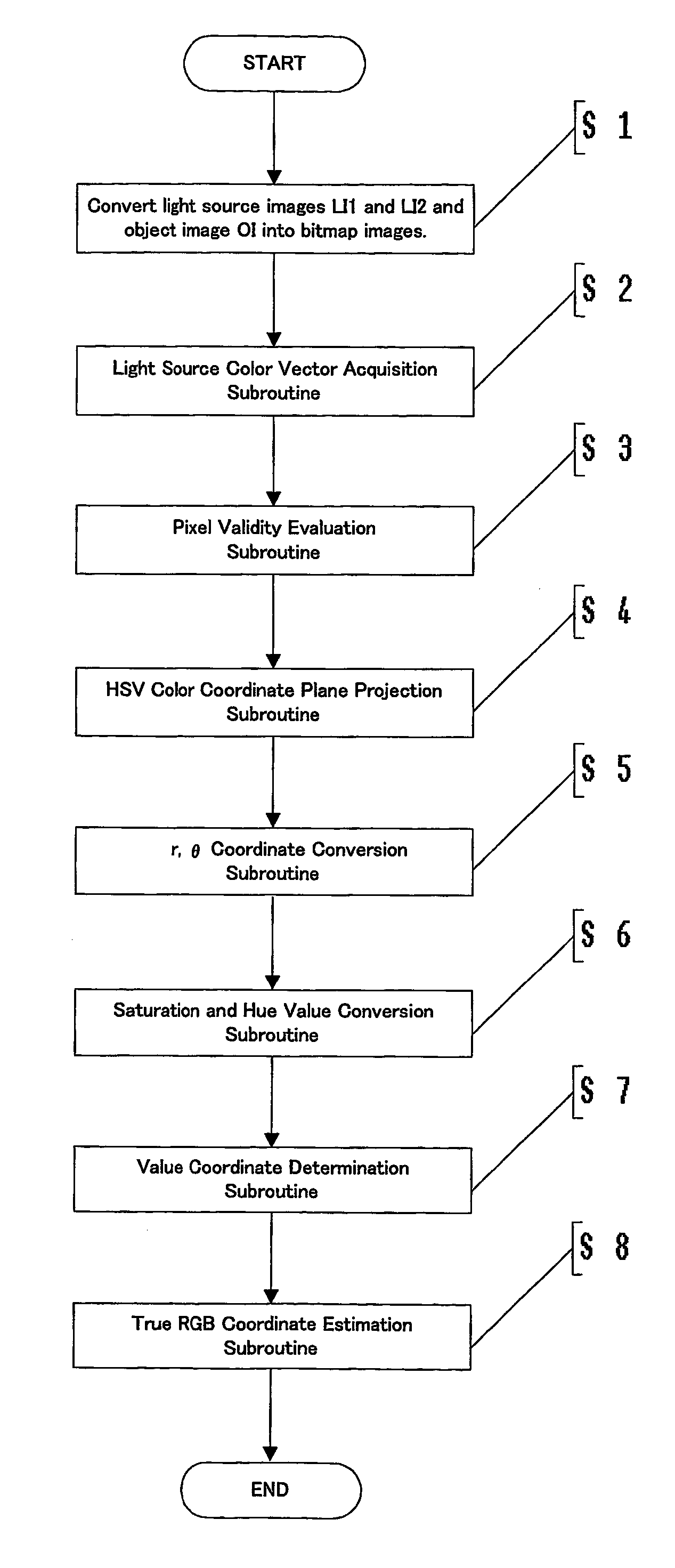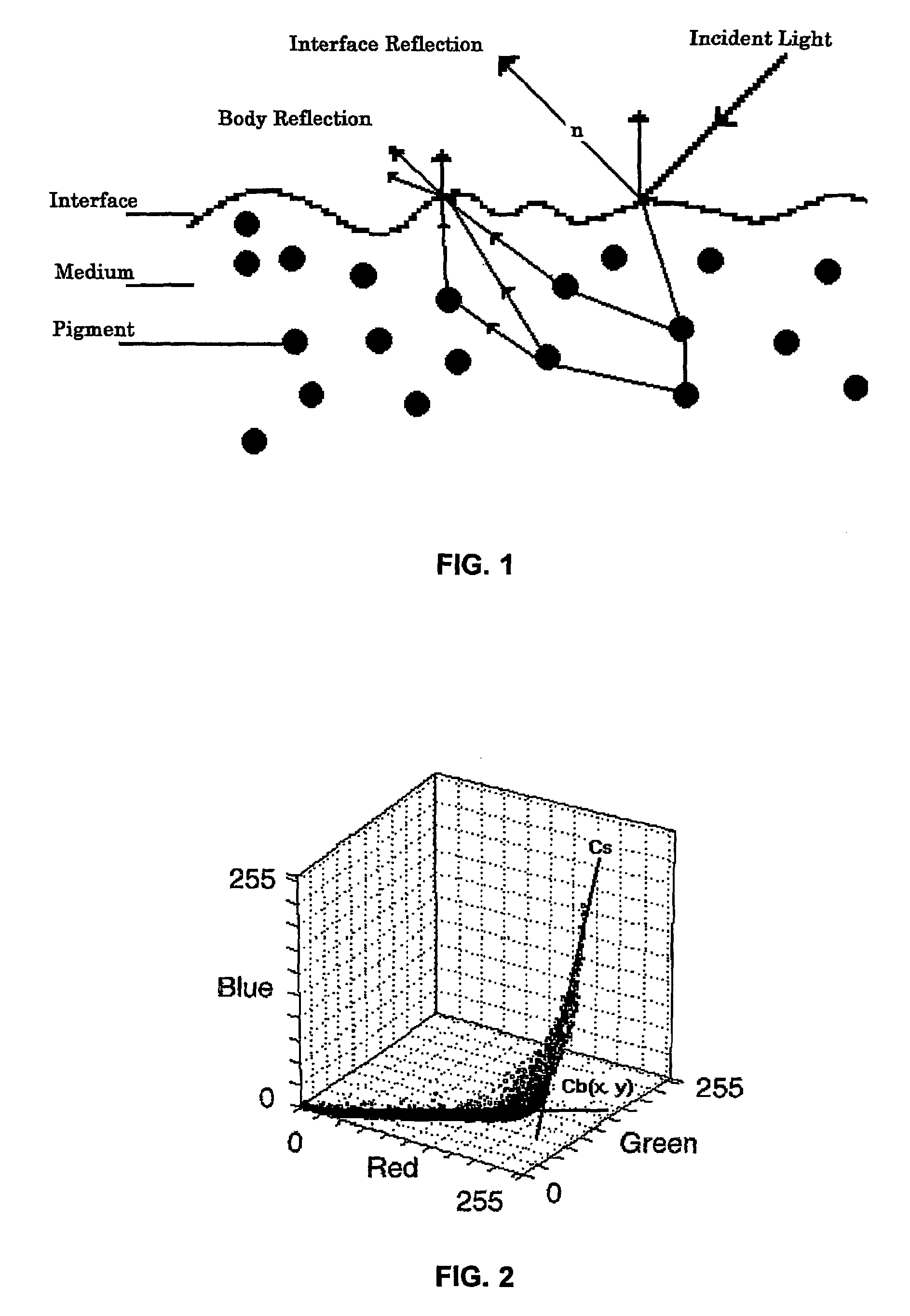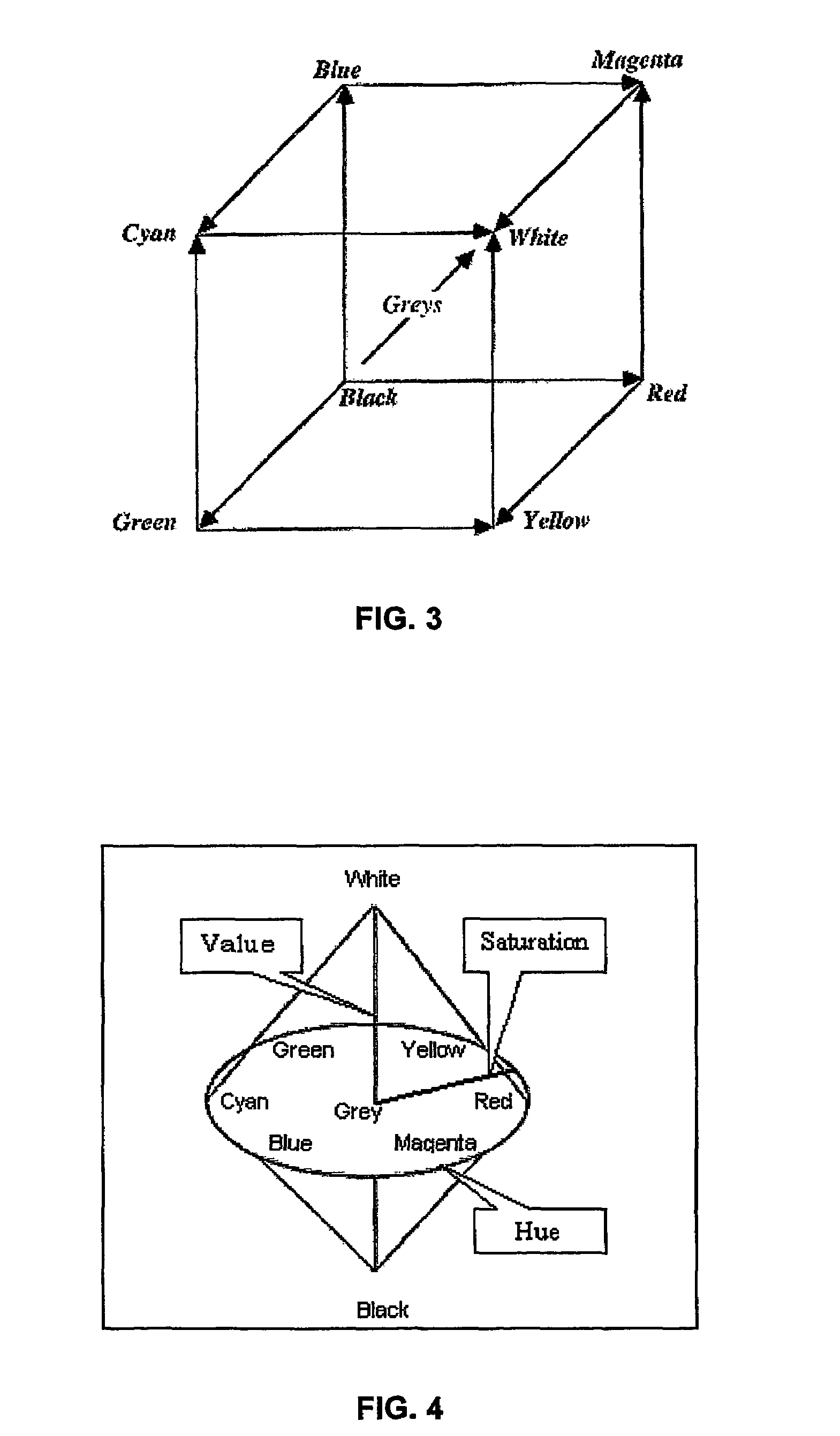Image highlight correction using illumination specific HSV color coordinate
a color coordinate and image technology, applied in image enhancement, instruments, image data processing, etc., can solve the problems of not being able to meet the high-speed requirements of machine vision applications, cannot be applied flexibly to objects in all environments, and cannot be effective in correct estimation of object colors, etc., to achieve the effect of accurate estimation of object colors and fast methods
- Summary
- Abstract
- Description
- Claims
- Application Information
AI Technical Summary
Benefits of technology
Problems solved by technology
Method used
Image
Examples
Embodiment Construction
[0028]First, the relationship of RGB color space and HSV color space, which is relevant to understanding this invention, shall be described briefly.
[0029]RGB color space is a hardware-oriented scheme that is based on the way camera sensors and display phosphors work. In RGB color space, the three primary colors of red, green and blue are assigned to the three independent axes of a cube as shown in FIG. 3. In this space, the grey scale lies along the cube diagonal with additive progression from black to white. The complementary colors of cyan, magenta, and yellow (CMY), which are used for printing, are located on the opposite corners such that combining green and blue produce cyan, blue and red produce magenta, and red and green produce yellow.
[0030]Although RGB color space is very useful for image representation, there are other encoding schemes that are more useful in image analysis. One such color space is hue, saturation and value (HSV) color space, which is illustrated in FIG. 4...
PUM
 Login to View More
Login to View More Abstract
Description
Claims
Application Information
 Login to View More
Login to View More - R&D
- Intellectual Property
- Life Sciences
- Materials
- Tech Scout
- Unparalleled Data Quality
- Higher Quality Content
- 60% Fewer Hallucinations
Browse by: Latest US Patents, China's latest patents, Technical Efficacy Thesaurus, Application Domain, Technology Topic, Popular Technical Reports.
© 2025 PatSnap. All rights reserved.Legal|Privacy policy|Modern Slavery Act Transparency Statement|Sitemap|About US| Contact US: help@patsnap.com



